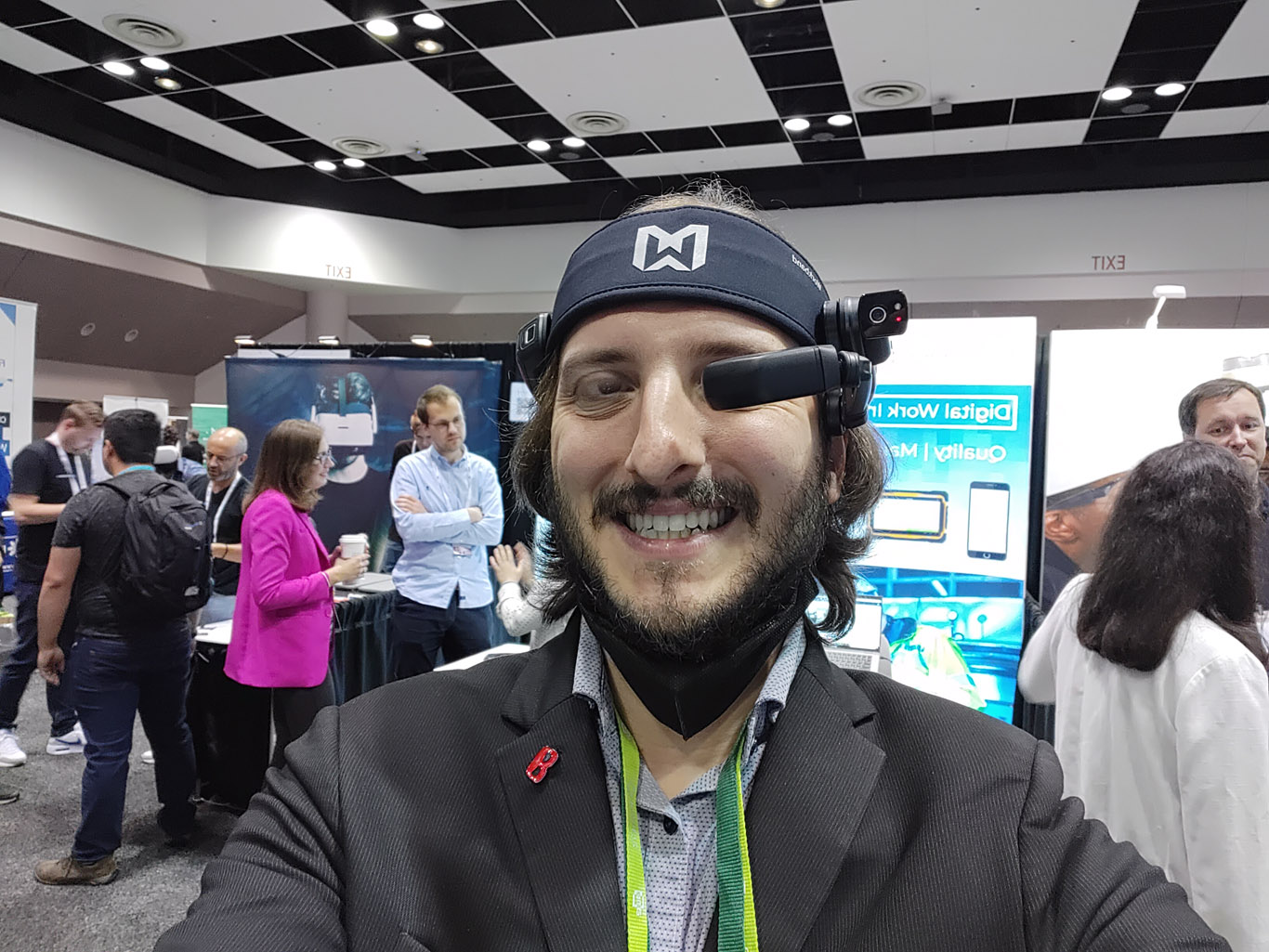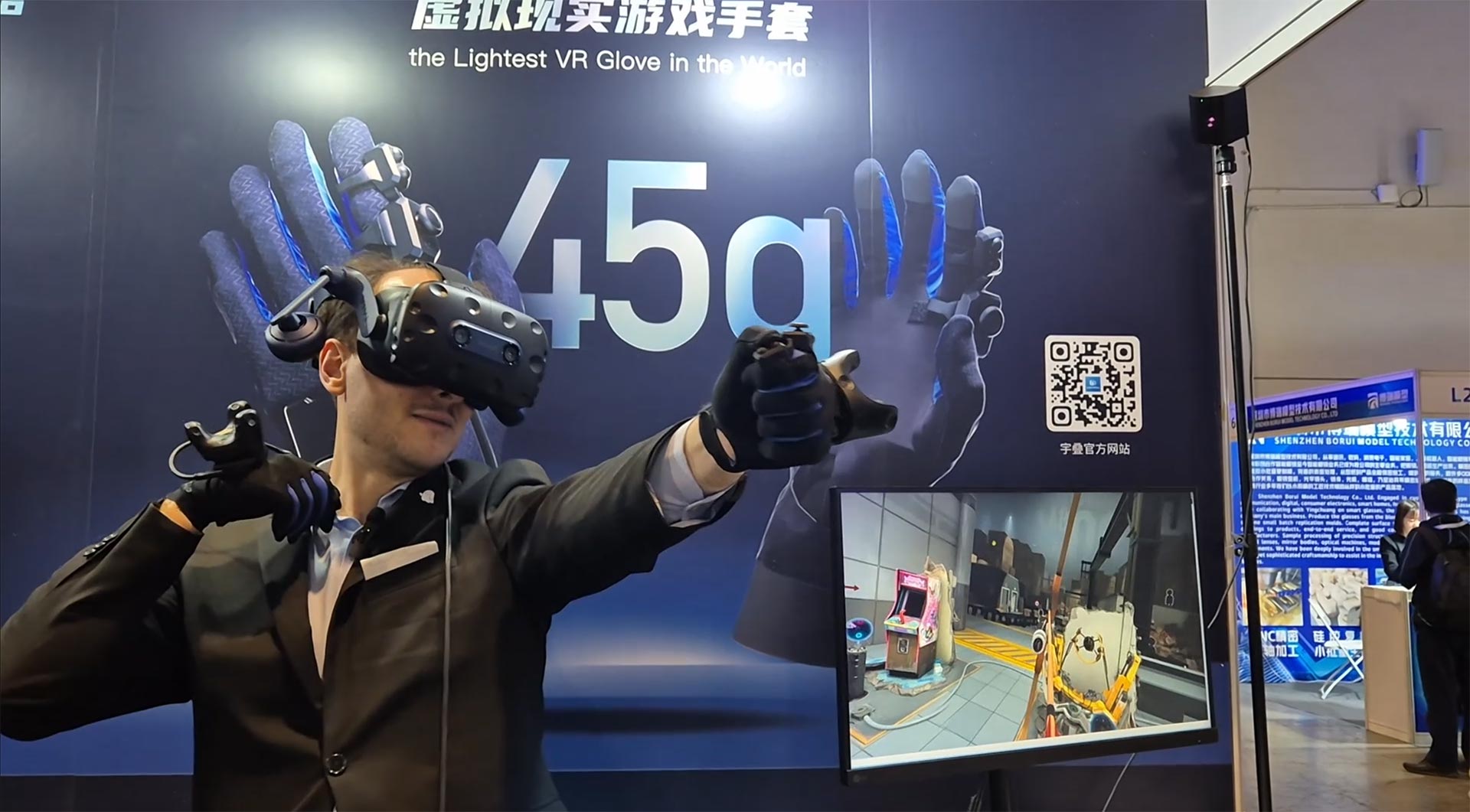Realwear Navigator 500 Hands-On: Great smartglasses for enterprise
Maybe they are not sexy or exciting to talk about, but industrial smartglasses are very successful in their field because they get the job done for a reasonable price. And Realwear, one of the leading companies in the field, has recently launched its new device, the Realwear Navigator 500, which promises to be even more useful than the previous model for field workers that have to perform assistance operations. I went hands-on with it at AWE, and these have been my impressions.
Realwear Navigator 500 Improvements
The Realwear Navigator 500 is the new generation model meant to substitute the glorious Realwear HMT-1, which was very successful inside warehouses and other industrial facilities. At a rapid glance they may seem very similar, because they are both monocle glasses with a small display in front of the user and a camera on top of it, but there are actually some improvements that are worth noticing.

First of all the camera: the sensor framing the outside world has in the Navigator 500 a staggering 48MP resolution. Of course, all this resolution may seem useless if the camera stream gets either compressed (to be streamed to a control room for remote assistance operations), or shown inside the very small screen that the user has in front of his eyes. But actually, all these extra pixels come in very handy: first of all, in standard usage, every four pixels of the camera are used to reconstruct only one pixel, to create a final image of 12MP that is shown to the user. This zooming-out operation is meant to create a new image that is less prone to noise and that is more reliable in low-light conditions than if the original sensor was a 12MP one. Furthermore, in case the user wants to zoom the camera, starting from 48MP means that you can still zoom at 1.8x and obtain a clean 12MP image without any artifact, because you already had those pixels, so you don’t have to perform any kind of digital zoom. There are also additional IMUs installed onto the device, that together with the one that was already present in the camera module, guarantee a better stabilization of the image. All of this is great to guarantee optimal image quality to the operator that has to perform remote assistance operations inside industrial warehouses, which typically feature various tricky conditions.

The device is also modular, and the camera can be easily detached and attached. This is not only good so that you can substitute the camera easily in case it breaks, but it is also fundamental to increase the lifespan of the device. Realwear makes professional headsets, and in the enterprise world, companies want a product that is durable and on which they can rely on for a lot of time. This is why the predicted lifespan for this model is 4 years. But in 4 years, cameras are for sure going to evolve a lot, driven by the innovation of the smartphone sector, which is for sure faster than the smart glasses one. Thanks to the detachable camera, Realwear may decide in the next years to release a new upgraded module of the camera without having to release a full new model of the smart glasses. Companies can so be sure that they are going to buy a product with a long life and that can be upgraded in its most important modules.
The device is also lighter than the previous model and has an internal elastic headband that should guarantee better comfort. This way it can be worn for more hours by the workers that have to employ it.
The operating system has also been updated and now the Realwear Navigator 500 runs the modern Android 11.
Let me share with you some more photos I took about the device. They are not the best photos I have ever taken, but in these exhibitions the time is always very tight…



Hands-on
I went hands-on with two demos of the Realwear Navigator 500, and both were aimed at the most prominent use case for these smart glasses: maintenance.

The first one was made in collaboration with Transition Technologies PSC, and it showed the classic remote assistance operation, with one employee using the Realwear glasses and the other person being at the laptop, seeing what the first employee was seeing and guiding him. The use case was very standard, but what was interesting was that the camera stream of the Realwear was sent to the cloud, where a computer vision system labeled in real-time the objects the operator had in front of him and sent these data back to him. The camera stream was so augmented, but not on the Realwear headset, which is a small mobile device, but on the cloud. The field operator could then see the step-by-step instructions about the operations to do, powered by the automated labeling applied by the cloud. The system also featured automated translation, so that the field worker may speak a language and the operator in the control room may be a native speaker of another one, and the system took care of writing the translation of what every person was saying in the language of the other one. That was a cool idea, but the Italian translation I could read on the display was just ok-ish and not always perfect (like all automated translation nowadays). The demo was effective, by the way.

For the second demo, I could finally wear the device by myself and try a system that let me see some items and told me if there were errors or not in what I was seeing, telling me what I should have fixed. This was more a quality-check/maintenance demo to be performed alone, so to simulate an automated scenario. This demo worked as intended, too.
The interesting part of the second demo is that finally, I got to try the device for a few minutes. This is the feedback I can tell you for the short time I had with it:
- The headset is for sure lighter and more comfortable than the first unit. The headband is a great addition, in my opinion, because it makes the smartglasses sit better around the head
- The display was bright and the text inside it readable, which is very important considering that people have to read instructions that are written inside it. The only problem it had was some kind of red leaking and some glares in some contrasted zones of the display
- The real problem with these smart glasses is that you have to learn how to use them. You have the display just in front of one of your eyes, so if you keep staring at it, your eyes get a huge strain, because it’s as if you want them to focus at different distances: one at the display and the other at the real world. This is more or less the same problem I described for the Google Glass v2: only one eye should focus on a close display and read tiny writings on it, and this is tiresome. In my session with Realwear, I learned that probably the best approach is to use your eyes in the normal way, looking at the world around you, and then give short peeks at the closed small display with one eye just when you need to see a piece of information there
- The camera is attached to your head, but not necessarily frames what you are looking at with your eyes. You had better rotating it up and down until it points the object you want to augment or to send to the control room
- These glasses work mostly with a voice-recognition interface. The voice recognition worked quite well, and it failed just a few times in the tricky conditions I was in, that is a noisy show floor environment with the user speaking with a strong Italian accent. I like the idea of voice recognition because it lets the user work hands-free, which is great for workers in industrial environments. But at the same time, operating with menus with your voice is super-cumbersome, because you have to read aloud everything: imagine if you had to do the same with your pc: even just creating a new Word file means saying “OPEN START MENU”, “OPEN WORD”, “FILE MENU”, “CLICK NEW…”, “CLICK OK”, saying EVERYTHING you have to operate on is very cumbersome and a touchpad is much faster, in my opinion
- The onboard audio was clear for the conditions I had to operate in
Final impressions

I admit I am not a huge expert in industrial smart glasses, but I know that Realwear is one of the leading brands there, and for a reason. This new Navigator 500 headset integrates important upgrades over the previous model, and especially the higher-resolution camera and the better stabilization of the images can guarantee much better performances to its users. And the modular form factor is also a big advantage for companies that purchase it. Of course, this is not a device that may excite people in the XR community, but this is not its purpose: it must be very practical and effective, and in my opinion, it does its job pretty well.
My only concern is about the future of these monocles: they are not very comfortable for the eyes and they have a very small display, so I think that in the long run they will be substituted by something more akin to glasses. In 4 years, Meta is rumored to release its first AR glasses dedicated to consumers, so I guess that during the Navigator 5000’s lifetime, Realwear will have to perform a technology switch.
Disclaimer: this blog contains advertisement and affiliate links to sustain itself. If you click on an affiliate link, I'll be very happy because I'll earn a small commission on your purchase. You can find my boring full disclosure here.



